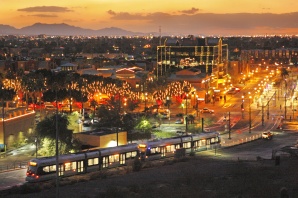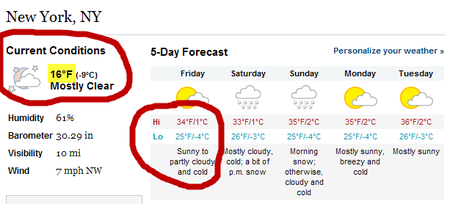The for-profit higher education sector is no stranger to scandal. In the 1980s and early '90s, it came to light that hundreds of fly-by-night schools had been set up solely to reap profits from the federal student loan programs, in part by preying on poor people and minorities. The most unscrupulous of them enrolled people straight off the welfare lines, and got them to sign up for the maximum amount of federal student loans available--sometimes without their knowledge or consent.
The rampant abuses caught the attention of the news media, sent shockwaves through Capitol Hill, and led to a year-long, high-profile Senate investigation led by Senator Sam Nunn, the Georgia Democrat. The standing-room-only hearings had all the trappings of scandal, with trade school officials pleading the Fifth and a school owner, who had been convicted of defrauding the government, brought to the witness table in handcuffs and leg irons.
Key lawmakers considered kicking all trade schools out of the federal student aid programs--a virtual death sentence given the institutions' heavy reliance on these funds. But Congress ultimately stepped back from the brink and instead strengthened the Department of Education's authority to weed out problem institutions. Under the new rules, for-profit colleges had to get at least 15 percent of their tuition money from sources other than federal loans and financial aid. Also, if more than a quarter of a school's students consistently defaulted on their loans within two years of graduating or dropping out, the school could be barred from participating in federal financial aid programs. The idea was to get rid of those schools that were set up solely to feed on federal funds and didn't provide the meaningful training students needed to get jobs and pay off their debt. As a result, during the 1990s more than 1,500 proprietary schools were either kicked out of the government's financial aid programs altogether or withdrew voluntarily. In an effort to rein in abusive recruiting tactics, in 1992 Congress also barred schools from compensating recruiters based on the number of students they brought in.
These changes shook up the industry. The old generation of trade schools gradually died off and were replaced by a new breed of for-profit colleges--mostly huge, publicly traded corporations. The largest, the Apollo Group, owns the University of Phoenix, which serves more than 400,000 students at some ninety campuses and 150 learning centers worldwide. Others include the Career Education Corporation, which serves 90,000 students at seventy-five campuses around the world, and Corinthian Colleges, which serves 69,000 students at more than 100 colleges in the United States and Canada.
Not only did these companies promise that their schools would be more responsive to the needs of students and employers than the previous generation, they also said they would be more accountable to the public because, as publicly traded companies, they were heavily regulated. "We've seen a fire across the prairie, and that fire has had a purifying effect," Omer Waddles, then the president of the Career College Association, told the Chronicle of Higher Education in 1997. "As our sector has weathered the storms of recent years, a stronger group of schools is emerging to carry, at a high level of credibility, the mantle of training and career development."
In reality, the new breed of schools had quite a bit in common with their predecessors; in some cases, they even operated out of the same buildings and employed the same personnel. What's more, rather than making them more accountable, the fact that they were publicly traded created a powerful incentive for them to game the system. After all, to keep their stock prices up and investors happy, the schools had to show that they were constantly expanding, which meant there was intense pressure to get students in the door and signed up for classes and financial aid.
With so much at stake, these schools quickly found ways to skirt the new rules. To get around the caps on student loan default rates, for instance, many of them began hiring agencies to help former students get forbearances or offering lines of credit so alums could make their student-loan payments--but only during the initial two-year window, when defaults were counted against the school by the Department of Education. After that, students were left to wrestle with the debt on their own. As for the rule requiring schools to get at least 15 percent of tuition from nongovernment sources, it had some unintended consequences. Rather than, say, enrolling people who could afford to pay some tuition out of pocket, many schools started pushing students to take out private student loans.
Previously, this kind of loan had gone exclusively to graduate and professional students pursuing careers in high-paying fields like law and medicine. The financially needy students who attend for-profit institutions couldn't qualify for them because of their less-than-stellar credit records, their lousy graduation rates, and their spotty record of finding work in their field. But this began to change around 2000. At the time, college tuition was skyrocketing--a trend that has only accelerated--and federal grants and loans weren't keeping pace. To fill the gap, financial aid officers started cutting deals with lenders to bring in private loan money. In the case of proprietary colleges, most of the large publicly traded chains forged arrangements with Sallie Mae, the nation's largest student loan company. (Once a quasi-government agency like Fannie Mae, it became entirely private in 2004.) In exchange for pots of private student loan funds that they could dole out at will--meaning without regard for students' ability to repay the debt--the schools gave Sallie Mae the right to be the exclusive provider of federal student loans on their campuses. Lenders vie fiercely for this privilege because federal loans are guaranteed by the government, meaning the Treasury pays back nearly all the money if the borrower defaults. Thus lenders get to pocket generous fees and interest and bear almost no risk.
...
Significantly, many proprietary schools are pushing institutional loans even when they know students won't be able to pay them off; Career Education and Corinthian Colleges only expect to recover roughly half of the money they distribute through their institutional lending programs, according to communications with shareholders. Why would they lend knowing they won't get the money back? Because any loss is more than offset by federal loans and financial aid dollars, which, despite the surge in private educational lending, still fund the bulk of tuition at proprietary schools. Say a student gets a $60,000 federal financial aid package and supplements it with a $20,000 institutional loan. The school comes out $40,000 ahead even if the borrower ultimately defaults. Plus, getting students in the door pumps up enrollment numbers, which makes for happy shareholders.
-- Washington Monthly / Stephen Burd.
November/December 2009 print edition


![Reblog this post [with Zemanta]](http://img.zemanta.com/reblog_e.png?x-id=d88d7c05-34c5-4ea1-bed1-cfa49b15d6a8)
![Reblog this post [with Zemanta]](http://img.zemanta.com/reblog_e.png?x-id=92ed7742-51f0-4dd9-9ce0-800a667a29b6)